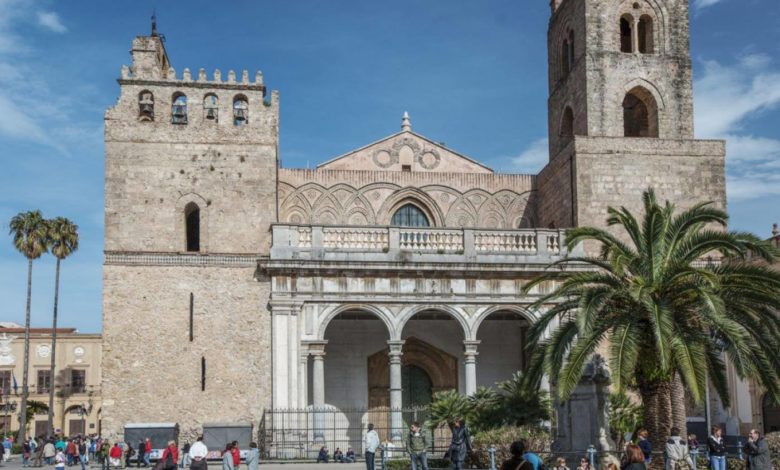The impact of the relationship between cultural heritage and the human in revive of the ancient city

Prepared by the researcher : Architect- Abeer Senyour – Master in Urban Planning and Environment Syria
Democratic Arabic Center
Journal of Urban and Territorial Planning : Eleventh Issue – March 2022
A Periodical International Journal published by the “Democratic Arab Center” Germany – Berlin.
:To download the pdf version of the research papers, please visit the following link
ABSTRACT
Many cities today suffer from the interruption of the spatial-social relationship and communication between their historical center and their modern parts, and the form of this discontinuity is an abandonment of the voids of the historical center and a self-contraction by the population, which has generated a rift in the societal identity in the city . and in many Sometimes this phenomenon is reflected in the cultural scene of the city as a whole, based on this research problem, the Syrian coastal city of Tartus will be studied after giving a brief overview of its history and the most important heritage components present in the old city and analyzing it using the space syntax technique to identify the most important spaces that encourage social interaction in the old city Then, a design and planning solution will be proposed that seeks to revitalize the old city and integrate it socially and spatially with the modern city of Tartous, based on several criteria that will be drawn from studying the importance of urban revitalization in the old city, which suffers from urban fragility, weakened the formation of the city and led to the disruption of the relationship between human and cultural heritage in The city and this, in turn, was reflected in the historical city scene, which was characterized by diversity and cohesion in Antiquity .
The research ends with several results to analyze the impact of the proposed solution economically and socially on the population in particular and on achieving sustainable development in general.
RESEARCH IMPORTANCE :
The importance of the research comes from its attempt to contribute to reviving the cultural scene of the old city and its harmony with the scene of the modern city. Based on the basic relationship of the identity of the residents and the legitimacy of their presence in the city, and mainly from the resilience of the residents in their spaces, the activation of their normal life and their acceptance of others in their spaces.
– The proposed design seeks to revive the city through all its heritage components. Each part has a distinct function that is in harmony with the functions of other historical parts in a rhythm that will revitalize and protect its identity at intervals of the whole day.
The use of space syntax theory in determining the most important spaces that should be Activate it to attract people and events to the Old City .
Urban revitalization : urban revitalization implies growth, progress, and infusion ofnew economic activities into stagnant or decliningcities that are no longer attractive to investors ormiddle-class households. [1]
It is a method adopted by several cities to recover from cases of crime, mass unemployment and racial tension that leads to the deterioration of the social, economic and political fabric in City [1] , and the accompanying neglect of heritage buildings .
Previous studies recommended the necessity of a honest assessment of the city situation as well as residents perceptions[2] .
CULTURAL HERITAGE AND SUSTAINABLE DEVELOPMENT :
The International Conference at the Changdu International Conference identified its commitment to the basic pillar of the UNESCO Convention on the Protection of the Intangible Cultural Heritage, which constitutes a guarantee for achieving sustainable development.[3]Cultural heritage is not limited to historical monuments and collections of archaeological artifacts only, but rather includes traditions and living expressions inherited from ancestors and which will be passed on to generations.
Such as rituals, traditional craftsmanship, and oral traditions (the living aspects of the population)[4]
UNESCO promotes the mobilization of culture in urban societies as a means of promoting a culture of tolerance, understanding, peace, reconciliation and reconstruction.
One of its forms is supporting cultural tourism and its management in a sustainable manner, as cultural tourism can help reduce poverty, create job opportunities and advance the economy by increasing the competitiveness of heritage tourism places and linking them to local activities and industries such as re-use of historical buildings and investment in artistic works in public places and the importance of Museums in promoting social cohesion[3]
THE IMPACT OF THE RELATIONSHIP BETWEEN MAN AND CULTURAL HERITAGE:
The essence of this relationship is reflected in the urban spaces in the city where socio-spatial practices occur and are important as sites of social harmony and interaction where a sense of belonging arises.
Today, there is a trend towards shifting the focus from material intervention to an approach that includes social contexts of cultural heritage, where community participation becomes an indispensable component of contemporary conservation practices. [5]
However, it should be carried out with mechanisms consistent with the specificity of each region and to find a means of communication and dialogue between all the actors in the project to revive the old city.
Therefore, research is reviving the old city of Tartous by relying on the urban void and community participation to open spatial, visual, functional and social links between the city and its historical center.
The following Table shows a summary of the relationship between cultural heritage & human and its impact on the revival of the ancient city, as deduced from the previous:
Table (1) Prepared by the researcher
OLD TARTOUS CITY
The ancient city of Tartus occupies the waterfront of the city of Tartus, with an area of about 20 hectares, bordered by the sea in the west. [6]
the shape (1) source General Directorate of Antiquities and Museums The following table shows the most important historical stations in the old city of Tartous :
| The Phoenician kingdom | Associated with Arwad Island as a land site for defense [7] |
| In the year 333 AD | the Romans called it Antradus [8] |
| Christianity in the third and fourth centuries
AD |
Saints Peter and Luke visited the ancient city on their way to Rome
Saint Luke painted an icon of the Virgin and consecrated the church in the name of the Virgin as the first church in the world [8] |
| In the Islamic period | A copy of the Caliph’s Qur’an was preserved in Medina[9] |
| The Crusader period | It was famous for making camelos, a colorful fabric worn by princes and kings[8] |
| In the Mamluk era | It was named after its current name, Tartous . [10] |
Table (2) Prepared by the researcher
Urban Formation Of The Old City Of Tartous:
The ancient city of Tartus was built in the Crusader period to be a fortress and then turned in the Islamic period into adjacent residential houses built inside the castle’s buildings and on its ruins and was characterized by contiguous dwellings overlooking alleys (narrow streets. ) [11] tangible and intangible cultural heritage in the ancient city of tartus :
- The Knights Church:
It takes a rectangular shape with four rows of caravans, where there are no windows. The roses on the locks of the arches are the important decorations, and the building was subjected to a great distortion. A small part of the roof remained. [12]
- The cathedral (now the museum)
It is a Latin church that shows the influence of Gothic art in the decoration of the capitals of the columns and is used today as a museum of antiquities collections in Tartous[12]
- The public bath:
It consists of sections: Al-Barani Al-Jawani and Al-Wastani, which are moved between them by a corridor covered with spherical domes interspersed with pottery skylights covered with crystals.
the shape (2) by the researcher Personal investigation 2021-4-1
Based on the above ، Previously, the ancient city of Tartus is distinguished by its historical diversity and strategic location, by the spatial and functional relationship with the sea However, it suffers from several basic problems:
Infrastructural problems (poor sanitation, bad streets)
The physical condition of some buildings due to their neglect and the absence of restoration and additions contrary to the heritage architectural character
Complex ideology: which delineates imaginary boundaries around the Old City due to the lack of societal awareness among the residents inside the Old City
All these problems led to the abandonment of the old city and the absence of effective investment projects .
Many previous studies included recommendations to eliminate housing irregularities, compensate residents with homes in the modern city, and restore shops to their original form The most important renewal programs that was introduced to the old city of Tartous : The full interventions project [13] with the participation of a European team that includes the municipalities of Palma (Spain), Bergamo (Italy), Beirut (Lebanon), Alicante (Spain) in 1997. It aims to support municipalities by the World Federation of United Cities
The intervention was divided into: 1- Socio-economic recovery
- Integrated rehabilitation of the architectural heritage
- The mechanism used included: interest in urban scenes and their visual perception. 4- The study of the resident population, the study of urban spaces, green areas and public spaces, the uses of ancient buildings, and the dynamic renewal of housing. [13]
As for modern restorations, they are carried out under the supervision of the General Directorate of Antiquities and Museums in Syria , a building in the old city square was converted into a heritage hotel , as for the heritage cellars, they are used as galleries to display the traditional crafts .
However, some important local industries that shape the history of the city, such as boatmaking and fishing, have been absent from revival attempts .
ANALYZING THE URBAN SPACES IN THE OLD CITY OF TARTOUS USING SPACE
SYNTAX :
| Space Syntax theory depends On chromatic values where the red lines have the highest integrals While gradually decreasing until the blue color reflects the lowest values of integration[14],Integration is Nested spaces that must be passed to move from Space to another | The axes extending towards the historic center have average integral values
While the highest degree of integration is in the square of the historic center, which confirms its importance and the necessity of activating it While the lowest values of integration are in the alleys that lead to residential houses inside the old city, and this is consistent with the characteristic of depth that is characterized by blocked alleys. |
the shape (3) by the researcher
SWOT ANALYSIS OF THE HISTORICAL CENTER:
| Strengths | Weaknesses | Oppertenities | Threats |
| The presence of a trench surrounding
the center, which is currently an empty area |
Lack of green spaces within the center | the sea | High rises for modern real estate next to the
center |
| The presence of gates marking the
entrances to the center |
Neglected narrow alleys | Proximity to the modern center | Lack of residential use around it |
| square in the middle of the old city | Marginal spaces | Public transport | There are no pedestrian paths |
| Reactivation of some buildings | The absence of street furniture, resting seats | Arwad Port | The absence of festivals in it |
Table (3) by the researcher
SUGGESTED PLANNING SOLUTION:
Integration of the proposed solution with a cultural festival held on a seasonal basis in the city and reviews and dialogues between residents of the center, officials and university students And the creation of a website for the festival through which donations are collected from various people interested in reviving the ancient city scene
As a means of communicating with expatriates, many residents of the studied historic center are outside the country
When they see pictures of the neighborhood they grew up in, they should visit the website
the shape (4) by the researcher
An interactive cultural and tourism path that connects the museum (formerly the cathedral) with the old city square and ends in the castle church, the most important stations in it: 1-The museum (cathedral) previously: removing the metal fence around the museum and merging the museum garden with the public space in front of it, removing the dense trees in the museum garden that limit visual contact between the pedestrians and between the museum building and between the museum and the sea, reorganizing the garden and placing platforms to display some outdoor sculptures Planting some trees of a kind Cercis siliquastrum[15] , which constitute the heritage of the city, and it is a coastal Mediterranean tree with a beautiful appearance, Suggestion of decorative elements on both sides of the museum made of mirrors Its function is to attract people and view their photos in an integrated manner with the Heritage Museum on one side and with the sea on the other .
2-The first pedestrian path, paving with stones, connects the empty space of the museum square and the old city square, and the activation of the shops on both sides of it with local products and the existing heritage industries (embroidery of fabrics, making local sweetness …) 3-The second pedestrian path: The museum square also connects to the old city square and is dedicated to introducing the profession of fishing and traditional restaurants that provide fish meals and tools that are used in the sea The profession of making boats and this path was chosen for its proximity to the Arwad port, the port dedicated to transporting passengersAnd traditional popular restaurants that serve fish meals .
4-Adding urban furnishing elements such as lighting – seating seats – identification signs
5-The Old City Square: The main task is to change the reputation and attract people to the square and consider it a public, social and cultural space, as it is the main station in the proposed path. There is currently one cafe in which only men meet. Must attract different genders and ages and taking into account people with special needs in shaping the square with a flexible design and this will provide an element of safety as people tend to places that have visual control
Sidewalk restaurants are open by locals to bond with others.
Activating and restoring the Ottoman bath next to the square
And activating the galleries with paintings on the history of Tartous and the Mediterranean coastal cities that share a rich history .
6-The interactive path ends with the castle chapel, the mysterious important part of this trip Rehabilitation and restoration of the church and the completion of the destroyed part of its roof with a frosted roof to protect it from the rain and allocate its function with the phrase ((Memory to Tartous))
One of the most important elements of belonging is to activate an illusory relationship between a person and the city to create a collective memory where the visitor writes or draws something for the city of Tartous and writes his name and he will return to this city one day .
the shape (5) by the researcher
IMPACT OF THE PROPOSED SOLUTION:
1- On the city scene: breaking the boundaries between the residents of the historic center and the modern part of the city, thus the proposed design brought about a process of social inclusion in stages, and this ensures the periodic review and evaluation of progress in achieving the goal and the maintenance of spaces periodically .
Presenting the historical city as a heritage tourism product that supports the local economy
2-Changing the reputation and creating a collective memory
Separation is not and will not be a solution in the historical regions. The details of the beautiful city must be entered into .
3-The proposed project will encourage investments that will be supervised by those responsible for antiquities ,Municipalities , the local community And the expatriate youth .
4-Through the proposed path, the visitor will get acquainted with the city of Tartous by meeting the past with the present and making the memory of the future .
5-The proposed project will ensure the automatic renewal of the waterfront .
6-Activating the image of the old city by linking the proposed solution with Arwad Port as part of future planning .
7-The research tried to deduce a ruler from the criteria that will be referred to when evaluating the progress of the proposal . Table (1) . In addition to evaluation using SWOT .The financial challenge represents the greatest possible difficulty facing the project
References
- F. Revitalization of historic Inner city area in Asia , Asian development bank , Philippines . 2008 .
- HOLLIGSWORTH . T ; GOEBEL . A . Strategies for postindustrial success from Garry to Lowell.
- UNITED NATIONS . Culture and sustainable development report of the united nations educational scientific and cultural organization , 2014 .
- https://ich.unesco.org/ar/–00003. 7-4-2021 .
- Y. P . Community Participation In Heritage Management: A Case In Macau .
Columbia University . 2016 .
- https://ar.wikipedia.org/wiki/%D8%B7%D8%B1%D8%B7%D9%88%D8%B3. 7-4-2021 . [7] HITTI . F (1950 ) . History of Syria, Lebanon and Palestine . Translated by Kamal Al-Yazji, House of Culture, Beirut .
[8] SOURITY . A . Summary of the History of Tartous, Tartous City Council. 2018 . [9] SOURITY . A . Tartous city – Syria . Publications of the Ministry of Local Administration Printed in Spain . 2002 .
- MULLER-WIENER . W (1982 ) . Casteles of the crusaders , ( Translated by Muhammad Al-Jallad ) . Thought House Damascus .
- Tayyarah . K . B . Cultural Historical Tourist Components of Tartous Old City And The Horizons of Developing it . Tartous University Journal for Research and Scientific Studies –Arts and Humanities Series . 2018 .
- The General Directorate of Antiquities and Museums in the Syrian Arab Republic , Tartous branch . 2020 .
- Total Interventions Project for the Old City of Tartous / Syria /. 1997 .
- SCHNEIDER , S . UCL Depthmap introducion to space syntax analysis software .
Bauhaus universitat Weimar .
%d8%a7%d9%84%d8%b3%d8%ac%d8%b1%d9%8a%d9%82-judas/. 7-4-2021 .




